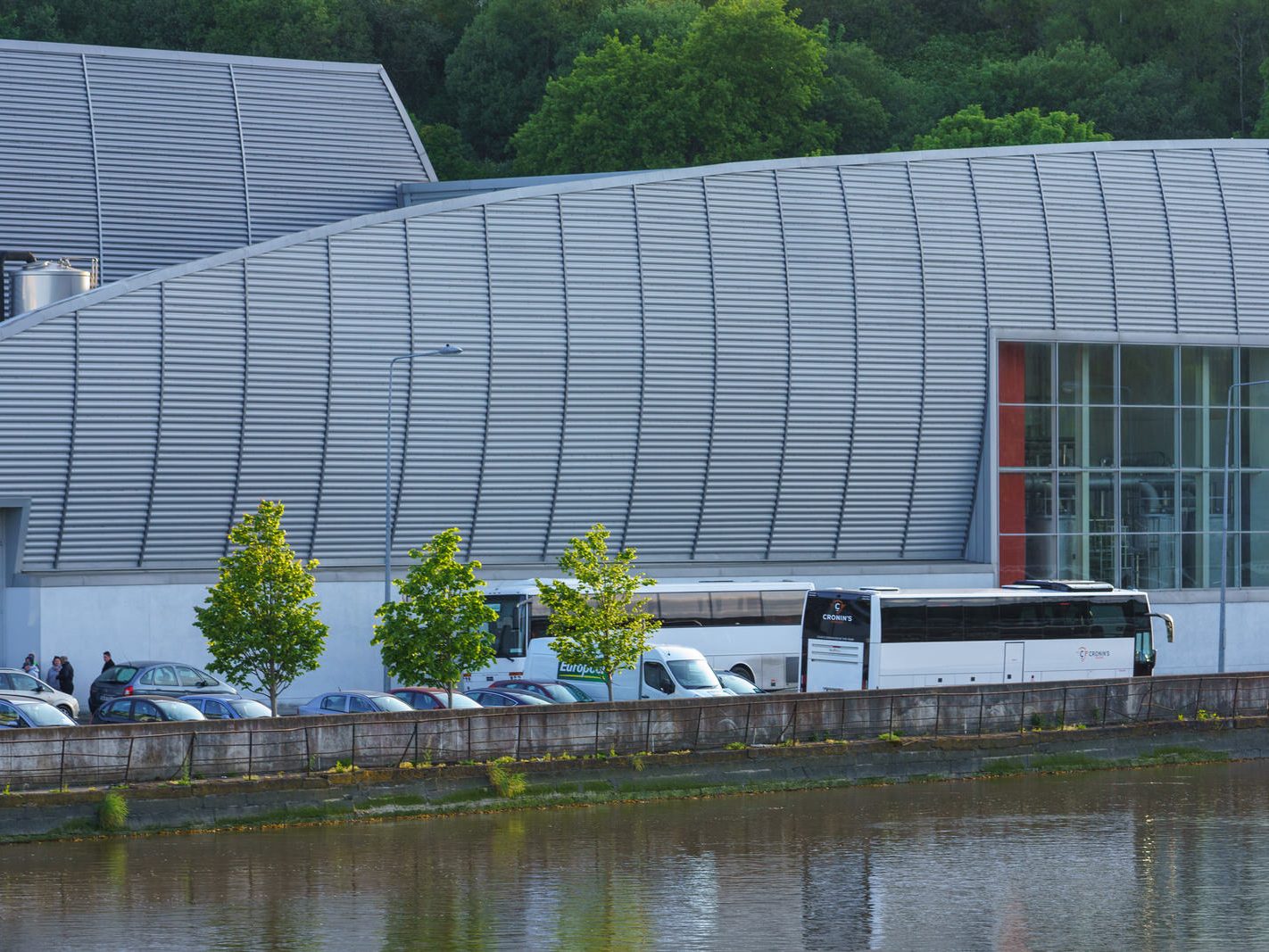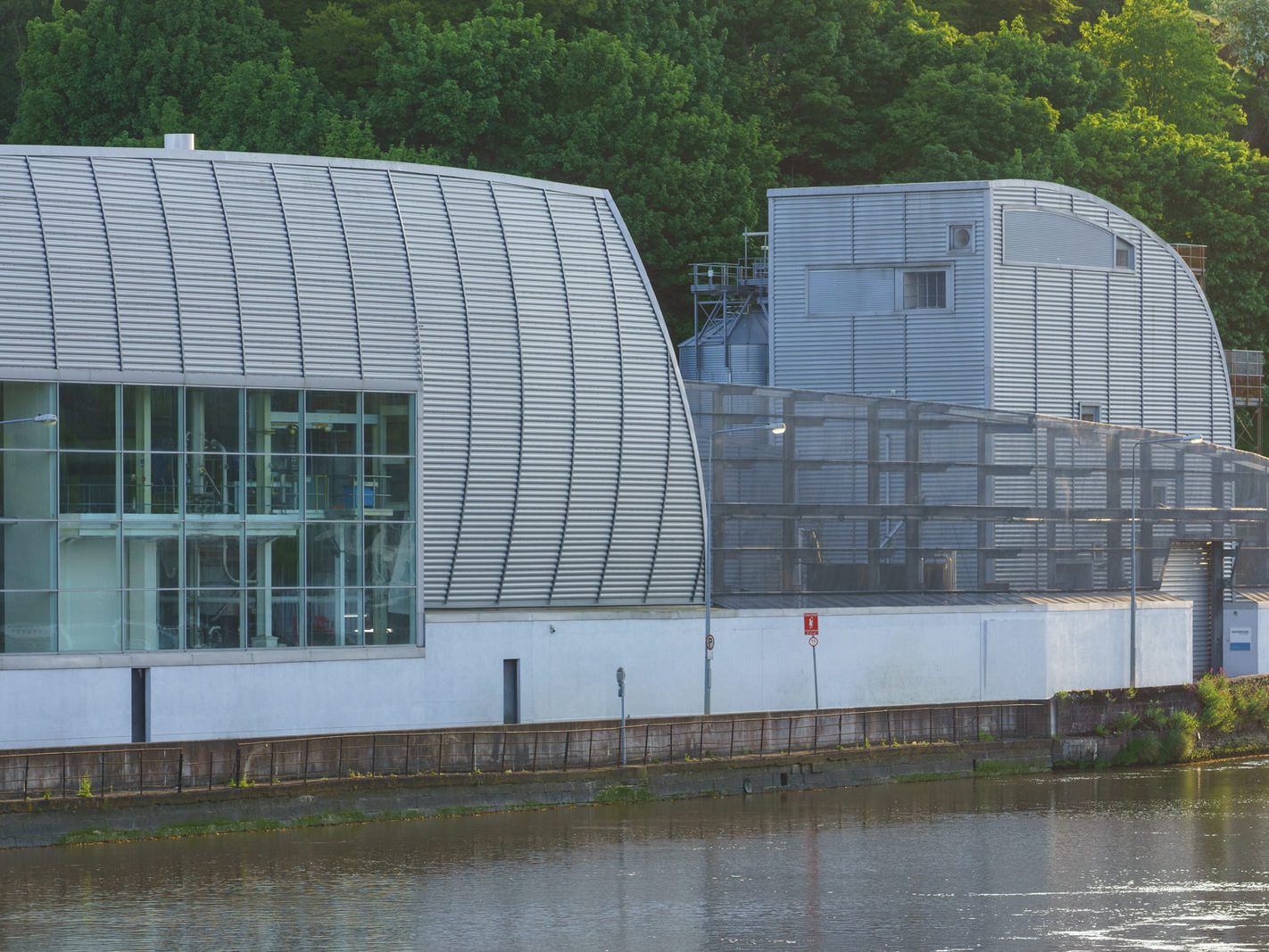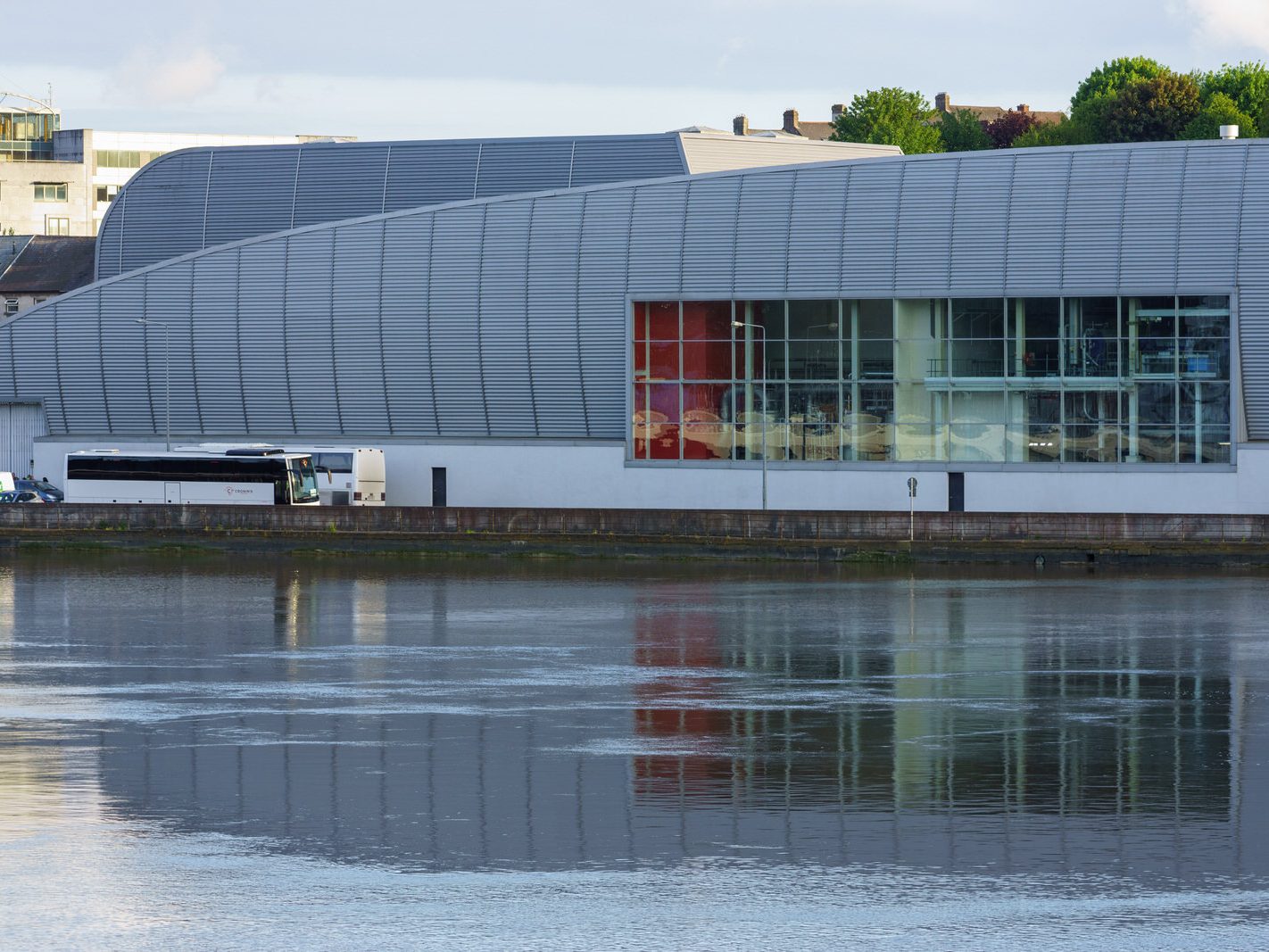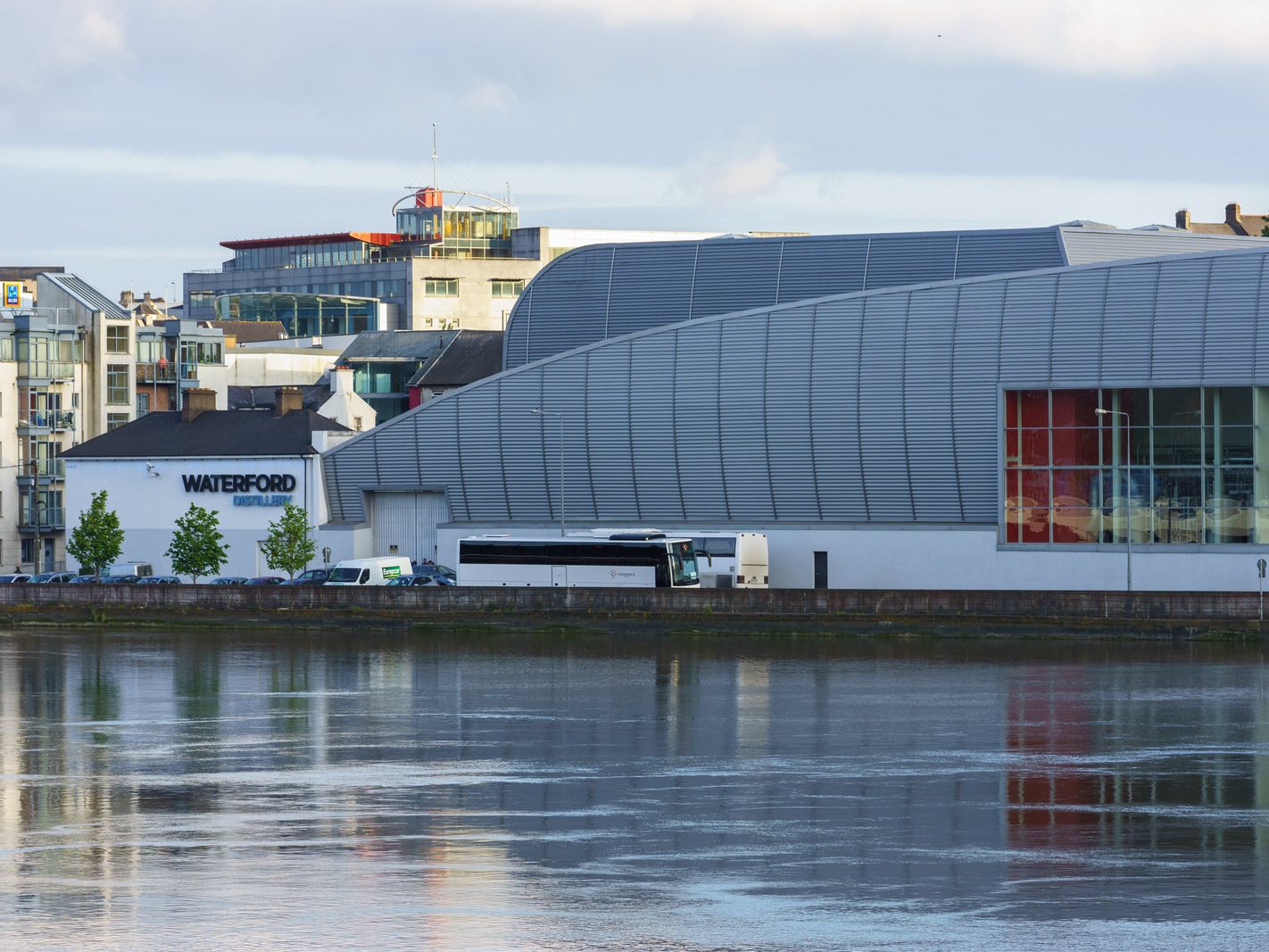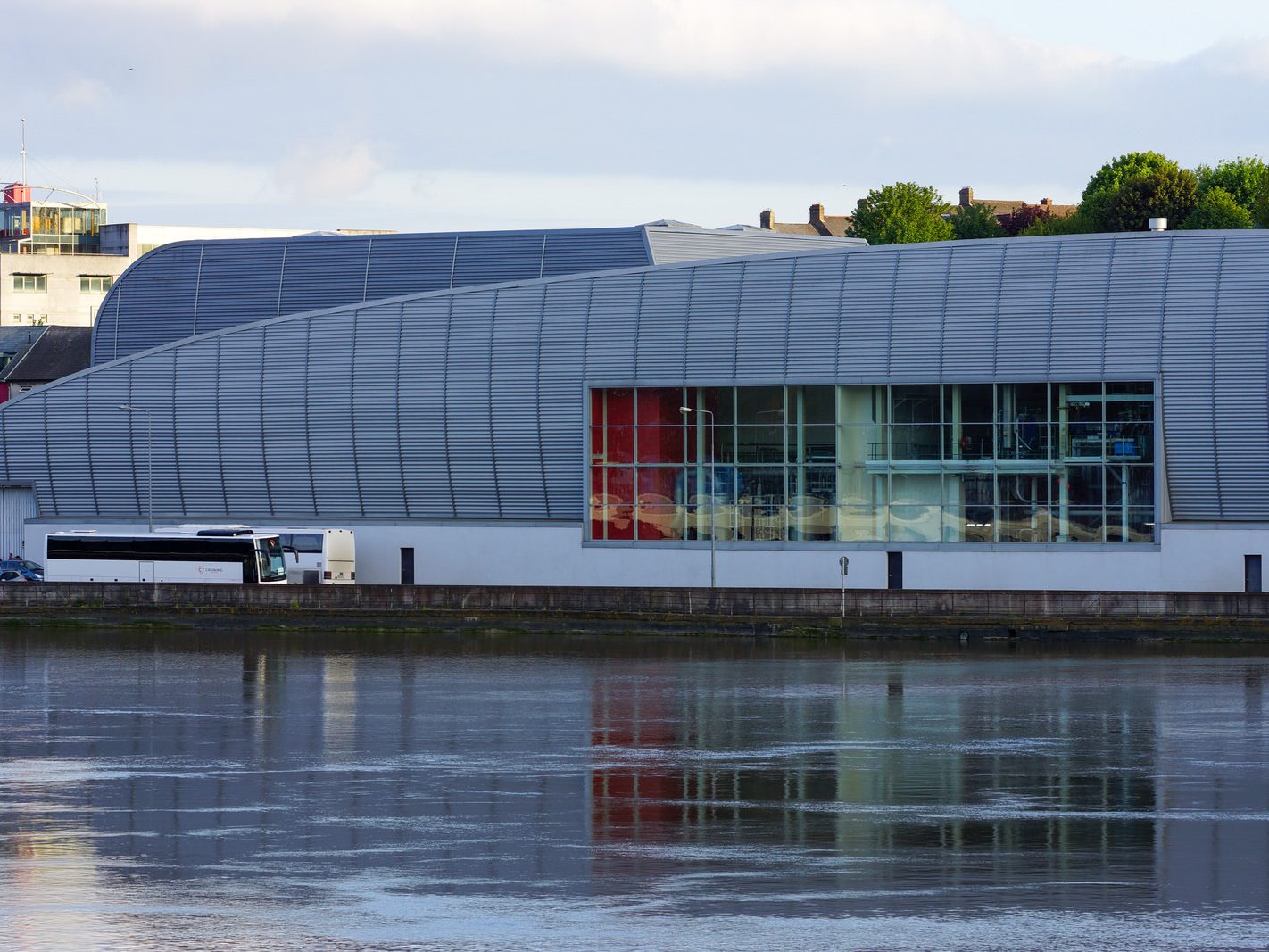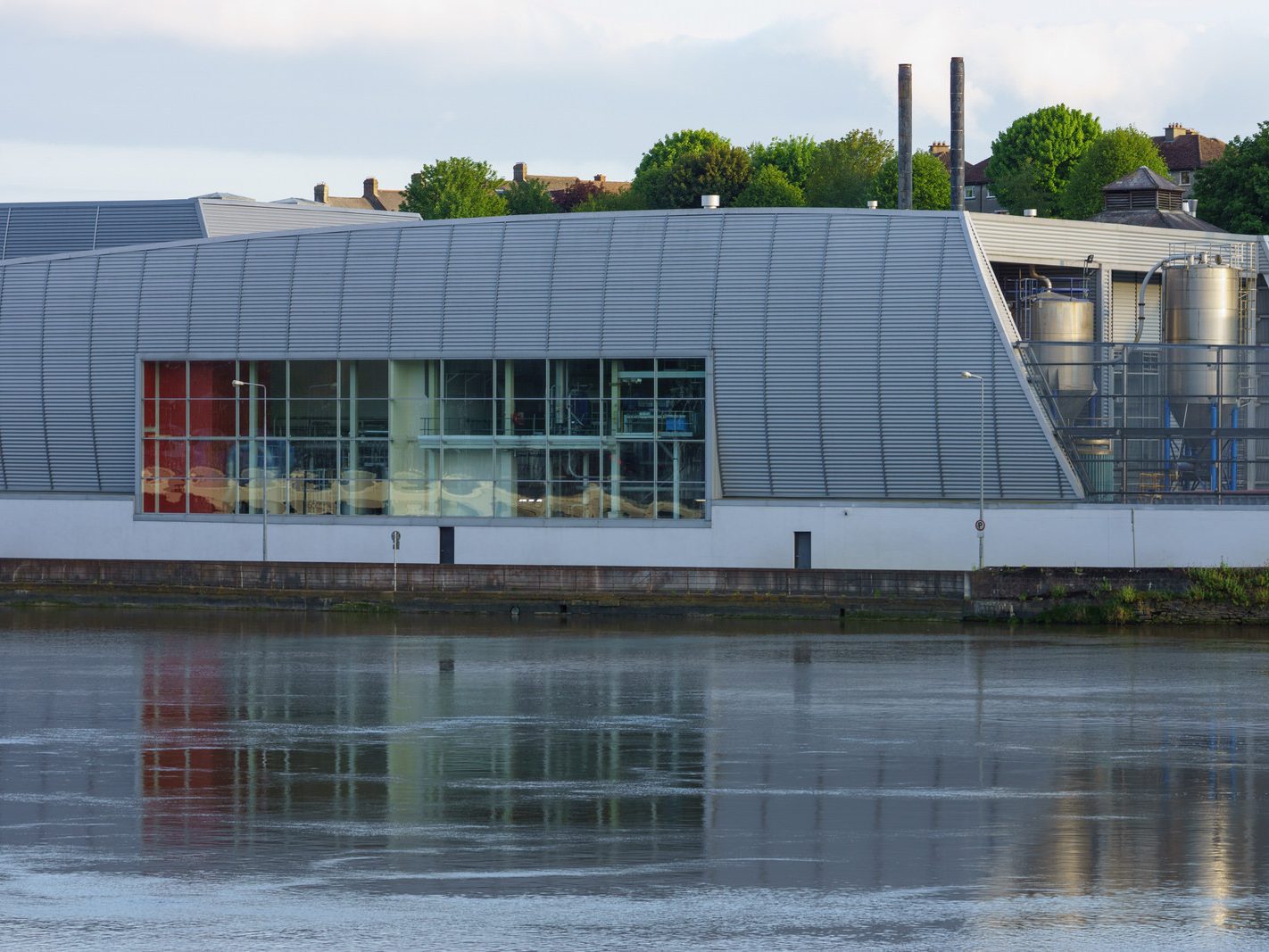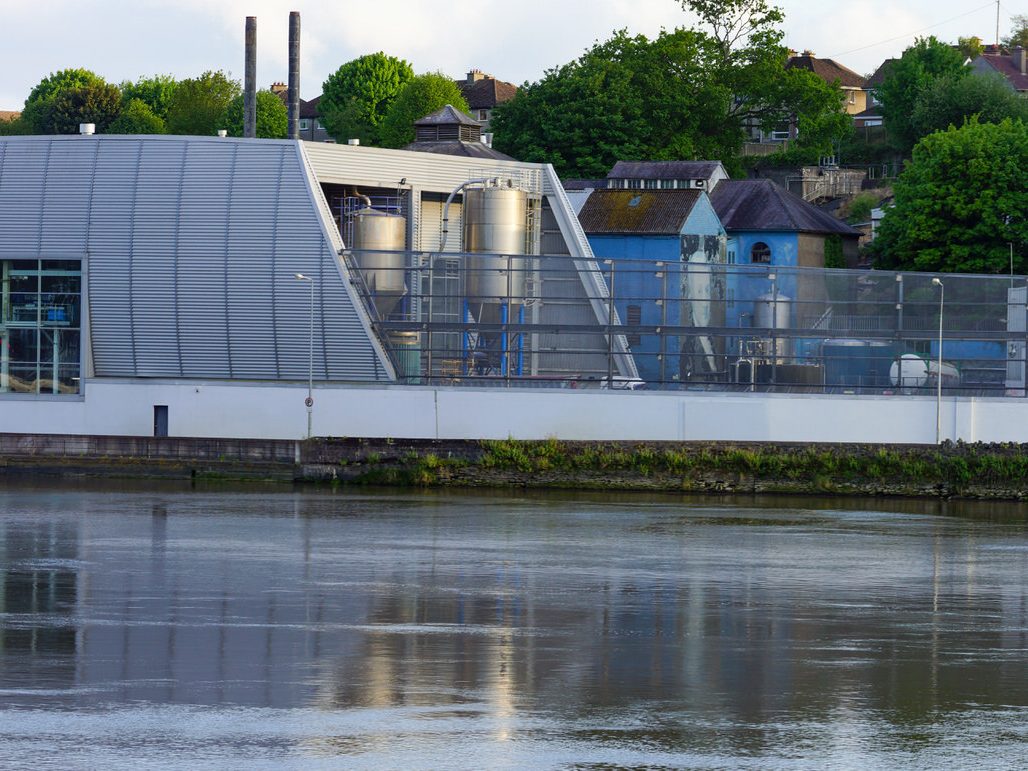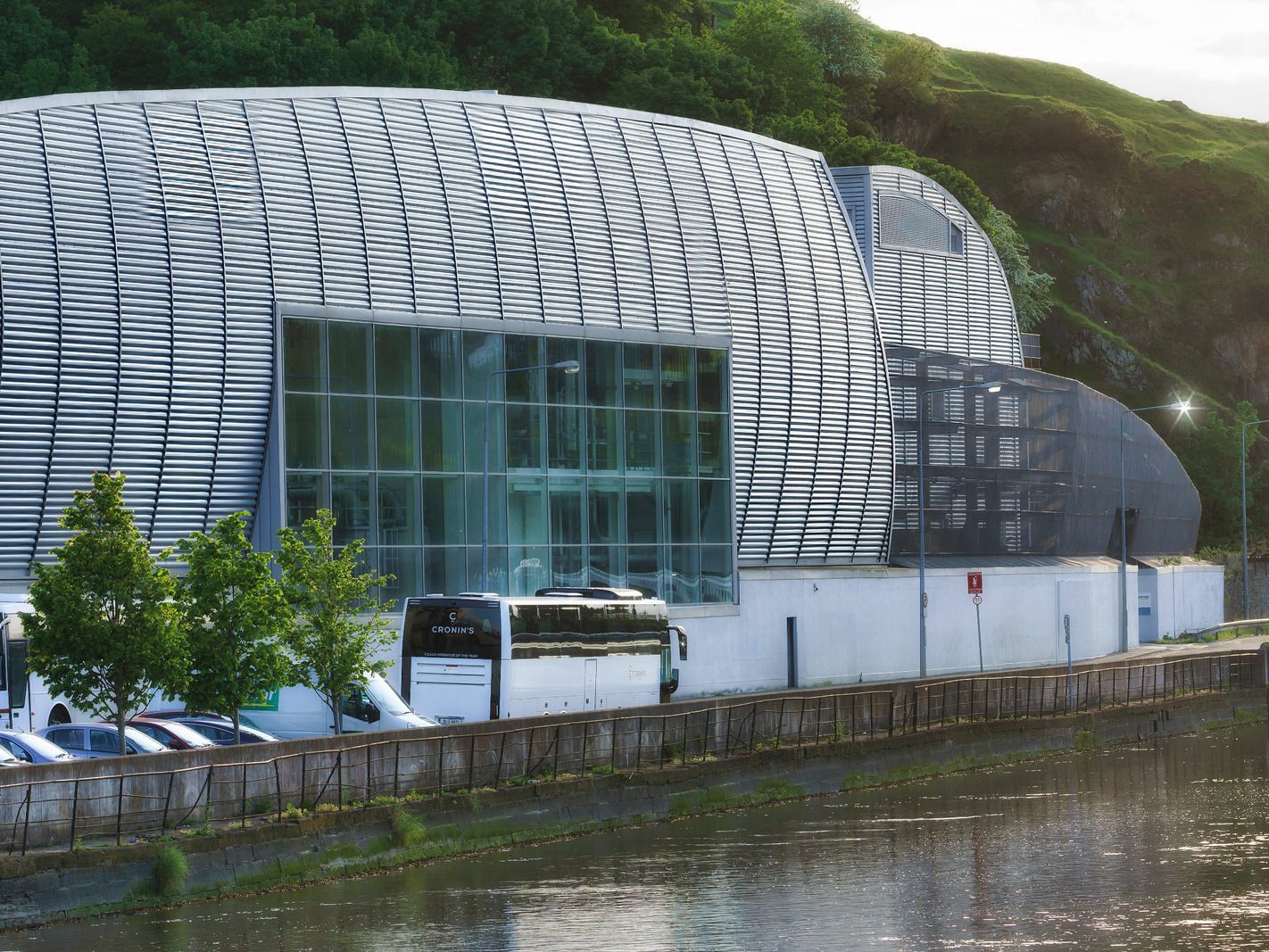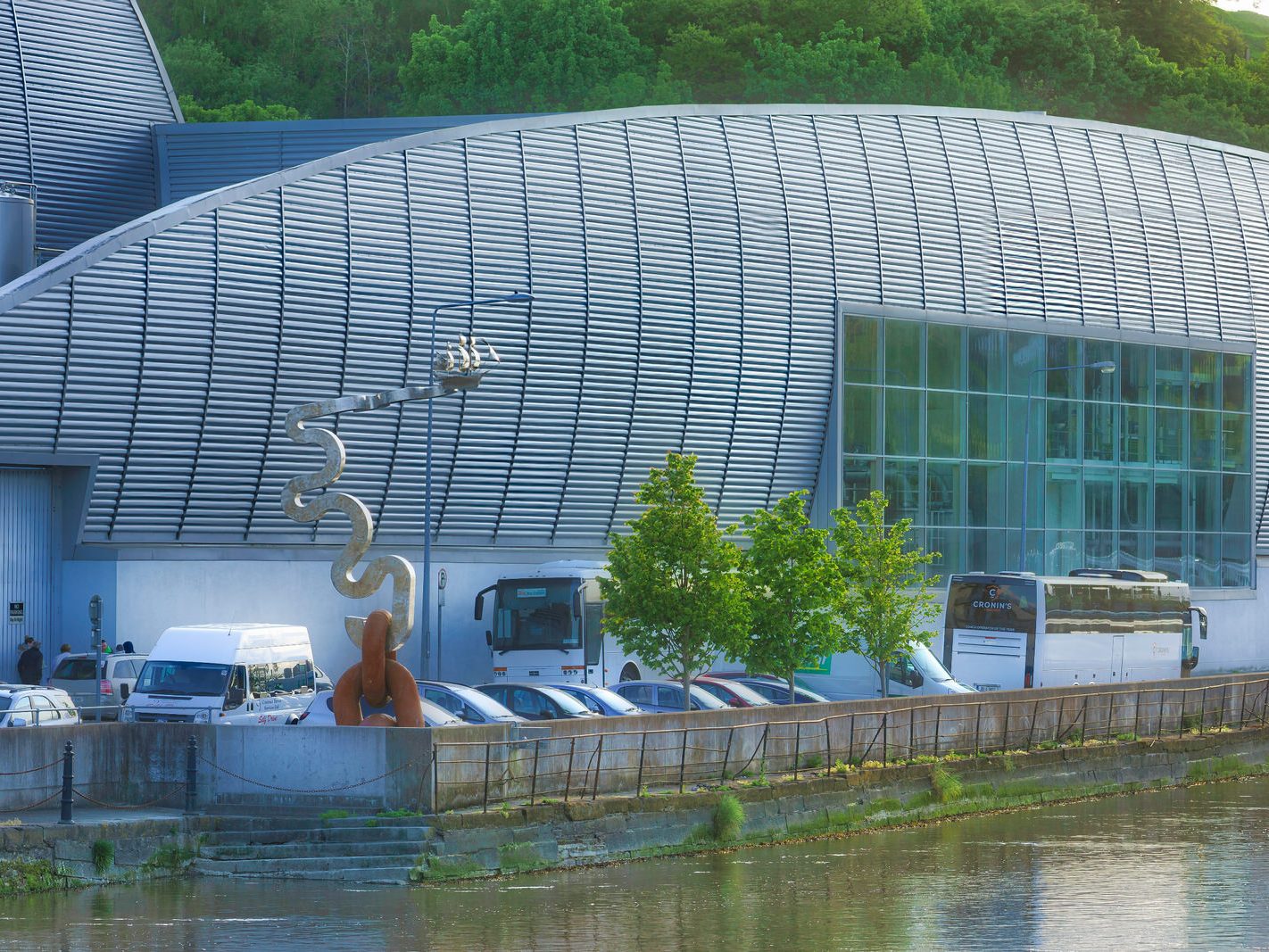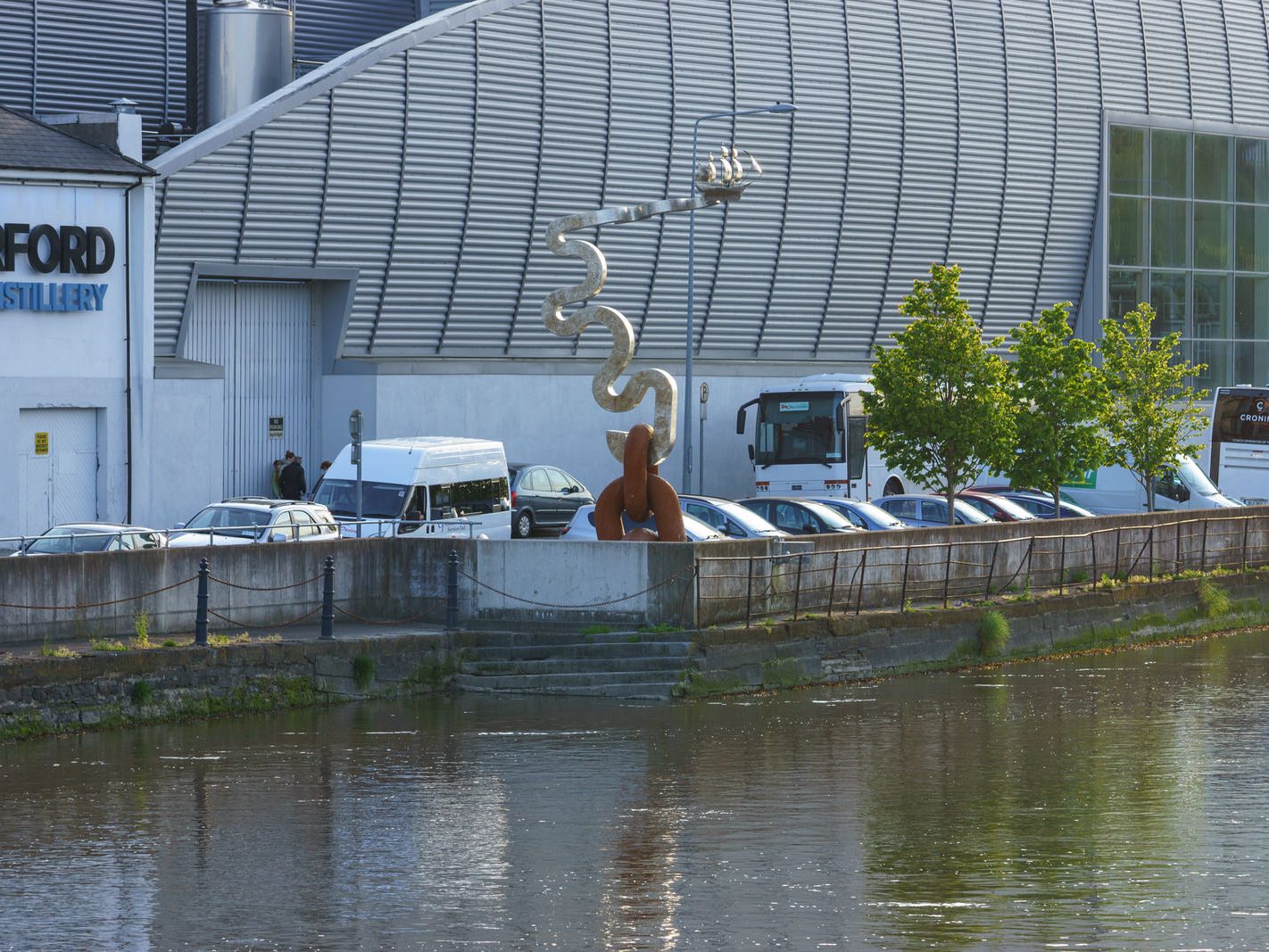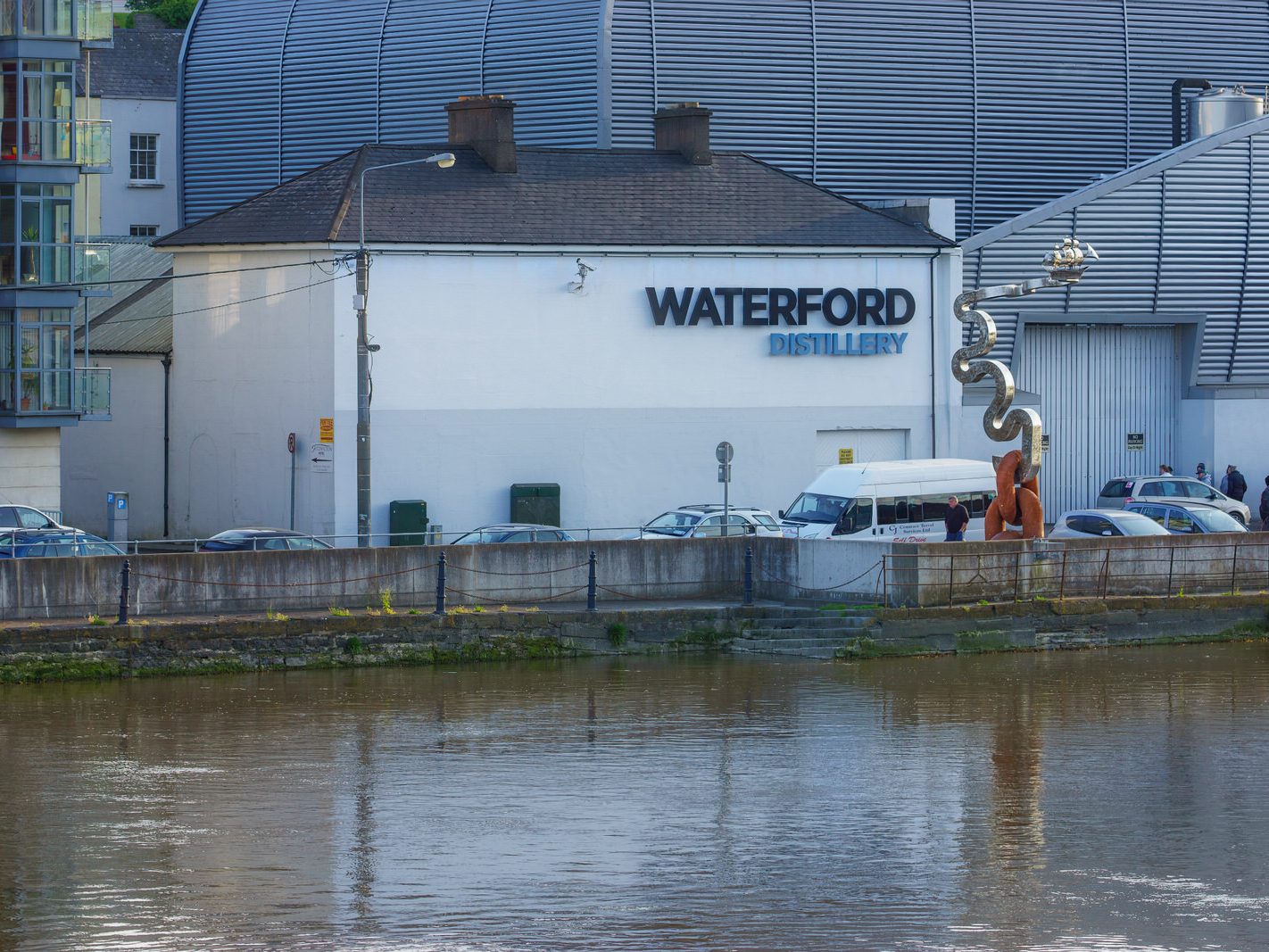PHOTOGRAPHED BY INFOMATIQUE
Having learned about Waterford Walls, I began visiting the city annually. I usually try to visit in August or September to photograph the most recent murals. This year, my trip is planned for August, a week or two earlier than I’d ideally like, but I was constrained by hotel availability.
I’m currently remastering my back catalogue, which has put me in a position to publish photographs I was previously unable to process due to a lack of time or storage capacity. I think my first time photographing Waterford was in 2016, but I was unaware of the street art at the time. Today I’m publishing these photos in bulk, but I plan to identify the artists and the background to each example at a later date.
Waterford Walls, recognised as Ireland’s largest street art festival, was established in 2015 as a direct response to the economic crisis that left the city with “forlorn buildings and facades.” A small, dedicated group of volunteers took on the ambitious challenge of using street art to “enhance and regenerate” these spaces and inject new life into the city.
The festival’s enduring mission is to transform urban areas, inspire communities, and foster connection through art. By “bring[ing] joy, colour and life back into the city,” it has successfully transformed Waterford into “Ireland’s largest and most accessible outdoor gallery.” The festival’s strategic use of street art as a catalyst for socio-economic recovery highlights that it was not merely an artistic endeavour but a deliberate intervention for urban renewal. By aiming to “reinstate civic pride,” the organisers recognised the social and economic benefits of public art. This positions street art as a powerful and accessible tool for community healing and economic revitalisation, demonstrating its capacity to drive recovery beyond traditional economic measures.
![EXAMPLES OF STREET ART IN WATERFORD [PHOTOGRAPHED JULY 2018]-255304-1](https://excellentstreetimages.com/UrbanCartographerExploresWaterford/wp-content/uploads/2025/08/EXAMPLES-OF-STREET-ART-IN-WATERFORD-PHOTOGRAPHED-JULY-2018-255304-1-1304x978.jpg)
![EXAMPLES OF STREET ART IN WATERFORD [PHOTOGRAPHED JULY 2018]-255302-1](https://excellentstreetimages.com/UrbanCartographerExploresWaterford/wp-content/uploads/2025/08/EXAMPLES-OF-STREET-ART-IN-WATERFORD-PHOTOGRAPHED-JULY-2018-255302-1-1422x1067.jpg)
![EXAMPLES OF STREET ART IN WATERFORD [PHOTOGRAPHED JULY 2018]-255303-1](https://excellentstreetimages.com/UrbanCartographerExploresWaterford/wp-content/uploads/2025/08/EXAMPLES-OF-STREET-ART-IN-WATERFORD-PHOTOGRAPHED-JULY-2018-255303-1-1169x877.jpg)
![EXAMPLES OF STREET ART IN WATERFORD [PHOTOGRAPHED JULY 2018]-255301-1](https://excellentstreetimages.com/UrbanCartographerExploresWaterford/wp-content/uploads/2025/08/EXAMPLES-OF-STREET-ART-IN-WATERFORD-PHOTOGRAPHED-JULY-2018-255301-1-1422x1067.jpg)
![EXAMPLES OF STREET ART IN WATERFORD [PHOTOGRAPHED JULY 2018]-255300-1](https://excellentstreetimages.com/UrbanCartographerExploresWaterford/wp-content/uploads/2025/08/EXAMPLES-OF-STREET-ART-IN-WATERFORD-PHOTOGRAPHED-JULY-2018-255300-1-1422x1067.jpg)
![EXAMPLES OF STREET ART IN WATERFORD [PHOTOGRAPHED JULY 2018]-255299-1](https://excellentstreetimages.com/UrbanCartographerExploresWaterford/wp-content/uploads/2025/08/EXAMPLES-OF-STREET-ART-IN-WATERFORD-PHOTOGRAPHED-JULY-2018-255299-1-1422x1067.jpg)
![EXAMPLES OF STREET ART IN WATERFORD [PHOTOGRAPHED JULY 2018]-255298-1](https://excellentstreetimages.com/UrbanCartographerExploresWaterford/wp-content/uploads/2025/08/EXAMPLES-OF-STREET-ART-IN-WATERFORD-PHOTOGRAPHED-JULY-2018-255298-1-1422x1067.jpg)
![EXAMPLES OF STREET ART IN WATERFORD [PHOTOGRAPHED JULY 2018]-255297-1](https://excellentstreetimages.com/UrbanCartographerExploresWaterford/wp-content/uploads/2025/08/EXAMPLES-OF-STREET-ART-IN-WATERFORD-PHOTOGRAPHED-JULY-2018-255297-1-1493x1120.jpg)
![EXAMPLES OF STREET ART IN WATERFORD [PHOTOGRAPHED JULY 2018]-255296-1](https://excellentstreetimages.com/UrbanCartographerExploresWaterford/wp-content/uploads/2025/08/EXAMPLES-OF-STREET-ART-IN-WATERFORD-PHOTOGRAPHED-JULY-2018-255296-1-1554x1166.jpg)
![EXAMPLES OF STREET ART IN WATERFORD [PHOTOGRAPHED JULY 2018]-255295-1](https://excellentstreetimages.com/UrbanCartographerExploresWaterford/wp-content/uploads/2025/08/EXAMPLES-OF-STREET-ART-IN-WATERFORD-PHOTOGRAPHED-JULY-2018-255295-1-1422x1067.jpg)
![EXAMPLES OF STREET ART IN WATERFORD [PHOTOGRAPHED JULY 2018]-255294-1](https://excellentstreetimages.com/UrbanCartographerExploresWaterford/wp-content/uploads/2025/08/EXAMPLES-OF-STREET-ART-IN-WATERFORD-PHOTOGRAPHED-JULY-2018-255294-1-1422x1067.jpg)
![EXAMPLES OF STREET ART IN WATERFORD [PHOTOGRAPHED JULY 2018]-255293-1](https://excellentstreetimages.com/UrbanCartographerExploresWaterford/wp-content/uploads/2025/08/EXAMPLES-OF-STREET-ART-IN-WATERFORD-PHOTOGRAPHED-JULY-2018-255293-1-1422x1067.jpg)
![EXAMPLES OF STREET ART IN WATERFORD [PHOTOGRAPHED JULY 2018]-255292-1](https://excellentstreetimages.com/UrbanCartographerExploresWaterford/wp-content/uploads/2025/08/EXAMPLES-OF-STREET-ART-IN-WATERFORD-PHOTOGRAPHED-JULY-2018-255292-1-1422x1067.jpg)
![EXAMPLES OF STREET ART IN WATERFORD [PHOTOGRAPHED JULY 2018]-255291-1](https://excellentstreetimages.com/UrbanCartographerExploresWaterford/wp-content/uploads/2025/08/EXAMPLES-OF-STREET-ART-IN-WATERFORD-PHOTOGRAPHED-JULY-2018-255291-1-1422x1067.jpg)
![EXAMPLES OF STREET ART IN WATERFORD [PHOTOGRAPHED JULY 2018]-255290-1](https://excellentstreetimages.com/UrbanCartographerExploresWaterford/wp-content/uploads/2025/08/EXAMPLES-OF-STREET-ART-IN-WATERFORD-PHOTOGRAPHED-JULY-2018-255290-1-1422x1067.jpg)
![EXAMPLES OF STREET ART IN WATERFORD [PHOTOGRAPHED JULY 2018]-255289-1](https://excellentstreetimages.com/UrbanCartographerExploresWaterford/wp-content/uploads/2025/08/EXAMPLES-OF-STREET-ART-IN-WATERFORD-PHOTOGRAPHED-JULY-2018-255289-1-1422x1067.jpg)
![EXAMPLES OF STREET ART IN WATERFORD [PHOTOGRAPHED JULY 2018]-255288-1](https://excellentstreetimages.com/UrbanCartographerExploresWaterford/wp-content/uploads/2025/08/EXAMPLES-OF-STREET-ART-IN-WATERFORD-PHOTOGRAPHED-JULY-2018-255288-1-1422x1067.jpg)
![EXAMPLES OF STREET ART IN WATERFORD [PHOTOGRAPHED JULY 2018]-255285-1](https://excellentstreetimages.com/UrbanCartographerExploresWaterford/wp-content/uploads/2025/08/EXAMPLES-OF-STREET-ART-IN-WATERFORD-PHOTOGRAPHED-JULY-2018-255285-1-1422x1067.jpg)
![EXAMPLES OF STREET ART IN WATERFORD [PHOTOGRAPHED JULY 2018]-255286-1](https://excellentstreetimages.com/UrbanCartographerExploresWaterford/wp-content/uploads/2025/08/EXAMPLES-OF-STREET-ART-IN-WATERFORD-PHOTOGRAPHED-JULY-2018-255286-1-1422x1067.jpg)
![EXAMPLES OF STREET ART IN WATERFORD [PHOTOGRAPHED JULY 2018]-255287-1](https://excellentstreetimages.com/UrbanCartographerExploresWaterford/wp-content/uploads/2025/08/EXAMPLES-OF-STREET-ART-IN-WATERFORD-PHOTOGRAPHED-JULY-2018-255287-1-1422x1067.jpg)
![EXAMPLES OF STREET ART IN WATERFORD [PHOTOGRAPHED JULY 2018]-255282-1](https://excellentstreetimages.com/UrbanCartographerExploresWaterford/wp-content/uploads/2025/08/EXAMPLES-OF-STREET-ART-IN-WATERFORD-PHOTOGRAPHED-JULY-2018-255282-1-1579x1184.jpg)
![EXAMPLES OF STREET ART IN WATERFORD [PHOTOGRAPHED JULY 2018]-255284-1](https://excellentstreetimages.com/UrbanCartographerExploresWaterford/wp-content/uploads/2025/08/EXAMPLES-OF-STREET-ART-IN-WATERFORD-PHOTOGRAPHED-JULY-2018-255284-1-1422x1067.jpg)
![EXAMPLES OF STREET ART IN WATERFORD [PHOTOGRAPHED JULY 2018]-255283-1](https://excellentstreetimages.com/UrbanCartographerExploresWaterford/wp-content/uploads/2025/08/EXAMPLES-OF-STREET-ART-IN-WATERFORD-PHOTOGRAPHED-JULY-2018-255283-1-1422x1067.jpg)
![EXAMPLES OF STREET ART IN WATERFORD [PHOTOGRAPHED JULY 2018]-255281-1](https://excellentstreetimages.com/UrbanCartographerExploresWaterford/wp-content/uploads/2025/08/EXAMPLES-OF-STREET-ART-IN-WATERFORD-PHOTOGRAPHED-JULY-2018-255281-1-1422x1067.jpg)
![EXAMPLES OF STREET ART IN WATERFORD [PHOTOGRAPHED JULY 2018]-255280-1](https://excellentstreetimages.com/UrbanCartographerExploresWaterford/wp-content/uploads/2025/08/EXAMPLES-OF-STREET-ART-IN-WATERFORD-PHOTOGRAPHED-JULY-2018-255280-1-1422x1067.jpg)
![EXAMPLES OF STREET ART IN WATERFORD [PHOTOGRAPHED JULY 2018]-255279-1](https://excellentstreetimages.com/UrbanCartographerExploresWaterford/wp-content/uploads/2025/08/EXAMPLES-OF-STREET-ART-IN-WATERFORD-PHOTOGRAPHED-JULY-2018-255279-1-1422x1067.jpg)
![EXAMPLES OF STREET ART IN WATERFORD [PHOTOGRAPHED JULY 2018]-255278-1](https://excellentstreetimages.com/UrbanCartographerExploresWaterford/wp-content/uploads/2025/08/EXAMPLES-OF-STREET-ART-IN-WATERFORD-PHOTOGRAPHED-JULY-2018-255278-1-1422x1067.jpg)
![EXAMPLES OF STREET ART IN WATERFORD [PHOTOGRAPHED JULY 2018]-255277-1](https://excellentstreetimages.com/UrbanCartographerExploresWaterford/wp-content/uploads/2025/08/EXAMPLES-OF-STREET-ART-IN-WATERFORD-PHOTOGRAPHED-JULY-2018-255277-1-1422x1067.jpg)
![EXAMPLES OF STREET ART IN WATERFORD [PHOTOGRAPHED JULY 2018]-255276-1](https://excellentstreetimages.com/UrbanCartographerExploresWaterford/wp-content/uploads/2025/08/EXAMPLES-OF-STREET-ART-IN-WATERFORD-PHOTOGRAPHED-JULY-2018-255276-1-1422x1067.jpg)
![EXAMPLES OF STREET ART IN WATERFORD [PHOTOGRAPHED JULY 2018]-255275-1](https://excellentstreetimages.com/UrbanCartographerExploresWaterford/wp-content/uploads/2025/08/EXAMPLES-OF-STREET-ART-IN-WATERFORD-PHOTOGRAPHED-JULY-2018-255275-1-1422x1067.jpg)
![EXAMPLES OF STREET ART IN WATERFORD [PHOTOGRAPHED JULY 2018]-255274-1](https://excellentstreetimages.com/UrbanCartographerExploresWaterford/wp-content/uploads/2025/08/EXAMPLES-OF-STREET-ART-IN-WATERFORD-PHOTOGRAPHED-JULY-2018-255274-1-1422x1067.jpg)
![EXAMPLES OF STREET ART IN WATERFORD [PHOTOGRAPHED JULY 2018]-255273-1](https://excellentstreetimages.com/UrbanCartographerExploresWaterford/wp-content/uploads/2025/08/EXAMPLES-OF-STREET-ART-IN-WATERFORD-PHOTOGRAPHED-JULY-2018-255273-1-1422x1067.jpg)
![EXAMPLES OF STREET ART IN WATERFORD [PHOTOGRAPHED JULY 2018]-255272-1](https://excellentstreetimages.com/UrbanCartographerExploresWaterford/wp-content/uploads/2025/08/EXAMPLES-OF-STREET-ART-IN-WATERFORD-PHOTOGRAPHED-JULY-2018-255272-1-1422x1067.jpg)
![EXAMPLES OF STREET ART IN WATERFORD [PHOTOGRAPHED JULY 2018]-255271-1](https://excellentstreetimages.com/UrbanCartographerExploresWaterford/wp-content/uploads/2025/08/EXAMPLES-OF-STREET-ART-IN-WATERFORD-PHOTOGRAPHED-JULY-2018-255271-1-1422x1067.jpg)
![EXAMPLES OF STREET ART IN WATERFORD [PHOTOGRAPHED JULY 2018]-255270-1](https://excellentstreetimages.com/UrbanCartographerExploresWaterford/wp-content/uploads/2025/08/EXAMPLES-OF-STREET-ART-IN-WATERFORD-PHOTOGRAPHED-JULY-2018-255270-1-1422x1067.jpg)
![EXAMPLES OF STREET ART IN WATERFORD [PHOTOGRAPHED JULY 2018]-255269-1](https://excellentstreetimages.com/UrbanCartographerExploresWaterford/wp-content/uploads/2025/08/EXAMPLES-OF-STREET-ART-IN-WATERFORD-PHOTOGRAPHED-JULY-2018-255269-1-1067x800.jpg)
![EXAMPLES OF STREET ART IN WATERFORD [PHOTOGRAPHED JULY 2018]-255268-1](https://excellentstreetimages.com/UrbanCartographerExploresWaterford/wp-content/uploads/2025/08/EXAMPLES-OF-STREET-ART-IN-WATERFORD-PHOTOGRAPHED-JULY-2018-255268-1-1422x1067.jpg)
![EXAMPLES OF STREET ART IN WATERFORD [PHOTOGRAPHED JULY 2018]-255267-1](https://excellentstreetimages.com/UrbanCartographerExploresWaterford/wp-content/uploads/2025/08/EXAMPLES-OF-STREET-ART-IN-WATERFORD-PHOTOGRAPHED-JULY-2018-255267-1-1422x1067.jpg)
![EXAMPLES OF STREET ART IN WATERFORD [PHOTOGRAPHED JULY 2018]-255266-1](https://excellentstreetimages.com/UrbanCartographerExploresWaterford/wp-content/uploads/2025/08/EXAMPLES-OF-STREET-ART-IN-WATERFORD-PHOTOGRAPHED-JULY-2018-255266-1-1422x1067.jpg)
![EXAMPLES OF STREET ART IN WATERFORD [PHOTOGRAPHED JULY 2018]-255265-1](https://excellentstreetimages.com/UrbanCartographerExploresWaterford/wp-content/uploads/2025/08/EXAMPLES-OF-STREET-ART-IN-WATERFORD-PHOTOGRAPHED-JULY-2018-255265-1-1422x1067.jpg)
![EXAMPLES OF STREET ART IN WATERFORD [PHOTOGRAPHED JULY 2018]-255264-1](https://excellentstreetimages.com/UrbanCartographerExploresWaterford/wp-content/uploads/2025/08/EXAMPLES-OF-STREET-ART-IN-WATERFORD-PHOTOGRAPHED-JULY-2018-255264-1-1422x1067.jpg)
![EXAMPLES OF STREET ART IN WATERFORD [PHOTOGRAPHED JULY 2018]-255262-1](https://excellentstreetimages.com/UrbanCartographerExploresWaterford/wp-content/uploads/2025/08/EXAMPLES-OF-STREET-ART-IN-WATERFORD-PHOTOGRAPHED-JULY-2018-255262-1-1422x1067.jpg)
![EXAMPLES OF STREET ART IN WATERFORD [PHOTOGRAPHED JULY 2018]-255263-1](https://excellentstreetimages.com/UrbanCartographerExploresWaterford/wp-content/uploads/2025/08/EXAMPLES-OF-STREET-ART-IN-WATERFORD-PHOTOGRAPHED-JULY-2018-255263-1-1422x1067.jpg)
![EXAMPLES OF STREET ART IN WATERFORD [PHOTOGRAPHED JULY 2018]-255260-1](https://excellentstreetimages.com/UrbanCartographerExploresWaterford/wp-content/uploads/2025/08/EXAMPLES-OF-STREET-ART-IN-WATERFORD-PHOTOGRAPHED-JULY-2018-255260-1-1422x1067.jpg)
![EXAMPLES OF STREET ART IN WATERFORD [PHOTOGRAPHED JULY 2018]-255261-1](https://excellentstreetimages.com/UrbanCartographerExploresWaterford/wp-content/uploads/2025/08/EXAMPLES-OF-STREET-ART-IN-WATERFORD-PHOTOGRAPHED-JULY-2018-255261-1-1422x1067.jpg)
![EXAMPLES OF STREET ART IN WATERFORD [PHOTOGRAPHED JULY 2018]-255258-1](https://excellentstreetimages.com/UrbanCartographerExploresWaterford/wp-content/uploads/2025/08/EXAMPLES-OF-STREET-ART-IN-WATERFORD-PHOTOGRAPHED-JULY-2018-255258-1-1422x1067.jpg)
![EXAMPLES OF STREET ART IN WATERFORD [PHOTOGRAPHED JULY 2018]-255259-1](https://excellentstreetimages.com/UrbanCartographerExploresWaterford/wp-content/uploads/2025/08/EXAMPLES-OF-STREET-ART-IN-WATERFORD-PHOTOGRAPHED-JULY-2018-255259-1-1422x1067.jpg)
![EXAMPLES OF STREET ART IN WATERFORD [PHOTOGRAPHED JULY 2018]-255257-1](https://excellentstreetimages.com/UrbanCartographerExploresWaterford/wp-content/uploads/2025/08/EXAMPLES-OF-STREET-ART-IN-WATERFORD-PHOTOGRAPHED-JULY-2018-255257-1-1422x1067.jpg)
![EXAMPLES OF STREET ART IN WATERFORD [PHOTOGRAPHED JULY 2018]-255256-1](https://excellentstreetimages.com/UrbanCartographerExploresWaterford/wp-content/uploads/2025/08/EXAMPLES-OF-STREET-ART-IN-WATERFORD-PHOTOGRAPHED-JULY-2018-255256-1-1422x1067.jpg)
![EXAMPLES OF STREET ART IN WATERFORD [PHOTOGRAPHED JULY 2018]-255255-1](https://excellentstreetimages.com/UrbanCartographerExploresWaterford/wp-content/uploads/2025/08/EXAMPLES-OF-STREET-ART-IN-WATERFORD-PHOTOGRAPHED-JULY-2018-255255-1-997x748.jpg)
![EXAMPLES OF STREET ART IN WATERFORD [PHOTOGRAPHED JULY 2018]-255254-1](https://excellentstreetimages.com/UrbanCartographerExploresWaterford/wp-content/uploads/2025/08/EXAMPLES-OF-STREET-ART-IN-WATERFORD-PHOTOGRAPHED-JULY-2018-255254-1-1422x1067.jpg)
![EXAMPLES OF STREET ART IN WATERFORD [PHOTOGRAPHED JULY 2018]-255253-1](https://excellentstreetimages.com/UrbanCartographerExploresWaterford/wp-content/uploads/2025/08/EXAMPLES-OF-STREET-ART-IN-WATERFORD-PHOTOGRAPHED-JULY-2018-255253-1-1217x913.jpg)
![EXAMPLES OF STREET ART IN WATERFORD [PHOTOGRAPHED JULY 2018]-255252-1](https://excellentstreetimages.com/UrbanCartographerExploresWaterford/wp-content/uploads/2025/08/EXAMPLES-OF-STREET-ART-IN-WATERFORD-PHOTOGRAPHED-JULY-2018-255252-1-1422x1067.jpg)
![EXAMPLES OF STREET ART IN WATERFORD [PHOTOGRAPHED JULY 2018]-255251-1](https://excellentstreetimages.com/UrbanCartographerExploresWaterford/wp-content/uploads/2025/08/EXAMPLES-OF-STREET-ART-IN-WATERFORD-PHOTOGRAPHED-JULY-2018-255251-1-1422x1067.jpg)
![EXAMPLES OF STREET ART IN WATERFORD [PHOTOGRAPHED JULY 2018]-255250-1](https://excellentstreetimages.com/UrbanCartographerExploresWaterford/wp-content/uploads/2025/08/EXAMPLES-OF-STREET-ART-IN-WATERFORD-PHOTOGRAPHED-JULY-2018-255250-1-1422x1067.jpg)
![EXAMPLES OF STREET ART IN WATERFORD [PHOTOGRAPHED JULY 2018]-255249-1](https://excellentstreetimages.com/UrbanCartographerExploresWaterford/wp-content/uploads/2025/08/EXAMPLES-OF-STREET-ART-IN-WATERFORD-PHOTOGRAPHED-JULY-2018-255249-1-1422x1067.jpg)
![EXAMPLES OF STREET ART IN WATERFORD [PHOTOGRAPHED JULY 2018]-255248-1](https://excellentstreetimages.com/UrbanCartographerExploresWaterford/wp-content/uploads/2025/08/EXAMPLES-OF-STREET-ART-IN-WATERFORD-PHOTOGRAPHED-JULY-2018-255248-1-1422x1067.jpg)
![EXAMPLES OF STREET ART IN WATERFORD [PHOTOGRAPHED JULY 2018]-255247-1](https://excellentstreetimages.com/UrbanCartographerExploresWaterford/wp-content/uploads/2025/08/EXAMPLES-OF-STREET-ART-IN-WATERFORD-PHOTOGRAPHED-JULY-2018-255247-1-1038x779.jpg)
![EXAMPLES OF STREET ART IN WATERFORD [PHOTOGRAPHED JULY 2018]-255246-1](https://excellentstreetimages.com/UrbanCartographerExploresWaterford/wp-content/uploads/2025/08/EXAMPLES-OF-STREET-ART-IN-WATERFORD-PHOTOGRAPHED-JULY-2018-255246-1-1422x1067.jpg)
![EXAMPLES OF STREET ART IN WATERFORD [PHOTOGRAPHED JULY 2018]-255244-1](https://excellentstreetimages.com/UrbanCartographerExploresWaterford/wp-content/uploads/2025/08/EXAMPLES-OF-STREET-ART-IN-WATERFORD-PHOTOGRAPHED-JULY-2018-255244-1-1422x1067.jpg)
![EXAMPLES OF STREET ART IN WATERFORD [PHOTOGRAPHED JULY 2018]-255245-1](https://excellentstreetimages.com/UrbanCartographerExploresWaterford/wp-content/uploads/2025/08/EXAMPLES-OF-STREET-ART-IN-WATERFORD-PHOTOGRAPHED-JULY-2018-255245-1-1422x1067.jpg)
![EXAMPLES OF STREET ART IN WATERFORD [PHOTOGRAPHED JULY 2018]-255243-1](https://excellentstreetimages.com/UrbanCartographerExploresWaterford/wp-content/uploads/2025/08/EXAMPLES-OF-STREET-ART-IN-WATERFORD-PHOTOGRAPHED-JULY-2018-255243-1-1422x1067.jpg)
![EXAMPLES OF STREET ART IN WATERFORD [PHOTOGRAPHED JULY 2018]-255242-1](https://excellentstreetimages.com/UrbanCartographerExploresWaterford/wp-content/uploads/2025/08/EXAMPLES-OF-STREET-ART-IN-WATERFORD-PHOTOGRAPHED-JULY-2018-255242-1-1422x1067.jpg)
![EXAMPLES OF STREET ART IN WATERFORD [PHOTOGRAPHED JULY 2018]-255241-1](https://excellentstreetimages.com/UrbanCartographerExploresWaterford/wp-content/uploads/2025/08/EXAMPLES-OF-STREET-ART-IN-WATERFORD-PHOTOGRAPHED-JULY-2018-255241-1-1422x1067.jpg)
![EXAMPLES OF STREET ART IN WATERFORD [PHOTOGRAPHED JULY 2018]-255240-1](https://excellentstreetimages.com/UrbanCartographerExploresWaterford/wp-content/uploads/2025/08/EXAMPLES-OF-STREET-ART-IN-WATERFORD-PHOTOGRAPHED-JULY-2018-255240-1-1422x1067.jpg)
![EXAMPLES OF STREET ART IN WATERFORD [PHOTOGRAPHED JULY 2018]-255239-1](https://excellentstreetimages.com/UrbanCartographerExploresWaterford/wp-content/uploads/2025/08/EXAMPLES-OF-STREET-ART-IN-WATERFORD-PHOTOGRAPHED-JULY-2018-255239-1-1422x1067.jpg)
![EXAMPLES OF STREET ART IN WATERFORD [PHOTOGRAPHED JULY 2018]-255237-1](https://excellentstreetimages.com/UrbanCartographerExploresWaterford/wp-content/uploads/2025/08/EXAMPLES-OF-STREET-ART-IN-WATERFORD-PHOTOGRAPHED-JULY-2018-255237-1-1422x1067.jpg)
![EXAMPLES OF STREET ART IN WATERFORD [PHOTOGRAPHED JULY 2018]-255238-1](https://excellentstreetimages.com/UrbanCartographerExploresWaterford/wp-content/uploads/2025/08/EXAMPLES-OF-STREET-ART-IN-WATERFORD-PHOTOGRAPHED-JULY-2018-255238-1-1422x1067.jpg)
![EXAMPLES OF STREET ART IN WATERFORD [PHOTOGRAPHED JULY 2018]-255236-1](https://excellentstreetimages.com/UrbanCartographerExploresWaterford/wp-content/uploads/2025/08/EXAMPLES-OF-STREET-ART-IN-WATERFORD-PHOTOGRAPHED-JULY-2018-255236-1-1200x900.jpg)
![EXAMPLES OF STREET ART IN WATERFORD [PHOTOGRAPHED JULY 2018]-255235-1](https://excellentstreetimages.com/UrbanCartographerExploresWaterford/wp-content/uploads/2025/08/EXAMPLES-OF-STREET-ART-IN-WATERFORD-PHOTOGRAPHED-JULY-2018-255235-1-1522x1141.jpg)
![EXAMPLES OF STREET ART IN WATERFORD [PHOTOGRAPHED JULY 2018]-255234-1](https://excellentstreetimages.com/UrbanCartographerExploresWaterford/wp-content/uploads/2025/08/EXAMPLES-OF-STREET-ART-IN-WATERFORD-PHOTOGRAPHED-JULY-2018-255234-1-1422x1067.jpg)
![EXAMPLES OF STREET ART IN WATERFORD [PHOTOGRAPHED JULY 2018]-255232-1](https://excellentstreetimages.com/UrbanCartographerExploresWaterford/wp-content/uploads/2025/08/EXAMPLES-OF-STREET-ART-IN-WATERFORD-PHOTOGRAPHED-JULY-2018-255232-1-1422x1067.jpg)
![EXAMPLES OF STREET ART IN WATERFORD [PHOTOGRAPHED JULY 2018]-255233-1](https://excellentstreetimages.com/UrbanCartographerExploresWaterford/wp-content/uploads/2025/08/EXAMPLES-OF-STREET-ART-IN-WATERFORD-PHOTOGRAPHED-JULY-2018-255233-1-856x642.jpg)
![EXAMPLES OF STREET ART IN WATERFORD [PHOTOGRAPHED JULY 2018]-255230-1](https://excellentstreetimages.com/UrbanCartographerExploresWaterford/wp-content/uploads/2025/08/EXAMPLES-OF-STREET-ART-IN-WATERFORD-PHOTOGRAPHED-JULY-2018-255230-1-1422x1067.jpg)
![EXAMPLES OF STREET ART IN WATERFORD [PHOTOGRAPHED JULY 2018]-255229-1](https://excellentstreetimages.com/UrbanCartographerExploresWaterford/wp-content/uploads/2025/08/EXAMPLES-OF-STREET-ART-IN-WATERFORD-PHOTOGRAPHED-JULY-2018-255229-1-1422x1067.jpg)
![EXAMPLES OF STREET ART IN WATERFORD [PHOTOGRAPHED JULY 2018]-255231-1](https://excellentstreetimages.com/UrbanCartographerExploresWaterford/wp-content/uploads/2025/08/EXAMPLES-OF-STREET-ART-IN-WATERFORD-PHOTOGRAPHED-JULY-2018-255231-1-896x672.jpg)
![EXAMPLES OF STREET ART IN WATERFORD [PHOTOGRAPHED JULY 2018]-255227-1](https://excellentstreetimages.com/UrbanCartographerExploresWaterford/wp-content/uploads/2025/08/EXAMPLES-OF-STREET-ART-IN-WATERFORD-PHOTOGRAPHED-JULY-2018-255227-1-1422x1067.jpg)
![EXAMPLES OF STREET ART IN WATERFORD [PHOTOGRAPHED JULY 2018]-255228-1](https://excellentstreetimages.com/UrbanCartographerExploresWaterford/wp-content/uploads/2025/08/EXAMPLES-OF-STREET-ART-IN-WATERFORD-PHOTOGRAPHED-JULY-2018-255228-1-1422x1067.jpg)
![EXAMPLES OF STREET ART IN WATERFORD [PHOTOGRAPHED JULY 2018]-255226-1](https://excellentstreetimages.com/UrbanCartographerExploresWaterford/wp-content/uploads/2025/08/EXAMPLES-OF-STREET-ART-IN-WATERFORD-PHOTOGRAPHED-JULY-2018-255226-1-1422x1067.jpg)
![EXAMPLES OF STREET ART IN WATERFORD [PHOTOGRAPHED JULY 2018]-255225-1](https://excellentstreetimages.com/UrbanCartographerExploresWaterford/wp-content/uploads/2025/08/EXAMPLES-OF-STREET-ART-IN-WATERFORD-PHOTOGRAPHED-JULY-2018-255225-1-1422x1067.jpg)
![EXAMPLES OF STREET ART IN WATERFORD [PHOTOGRAPHED JULY 2018]-255223-1](https://excellentstreetimages.com/UrbanCartographerExploresWaterford/wp-content/uploads/2025/08/EXAMPLES-OF-STREET-ART-IN-WATERFORD-PHOTOGRAPHED-JULY-2018-255223-1-1422x1067.jpg)
![EXAMPLES OF STREET ART IN WATERFORD [PHOTOGRAPHED JULY 2018]-255224-1](https://excellentstreetimages.com/UrbanCartographerExploresWaterford/wp-content/uploads/2025/08/EXAMPLES-OF-STREET-ART-IN-WATERFORD-PHOTOGRAPHED-JULY-2018-255224-1-1422x1067.jpg)
![EXAMPLES OF STREET ART IN WATERFORD [PHOTOGRAPHED JULY 2018]-255222-1](https://excellentstreetimages.com/UrbanCartographerExploresWaterford/wp-content/uploads/2025/08/EXAMPLES-OF-STREET-ART-IN-WATERFORD-PHOTOGRAPHED-JULY-2018-255222-1-1422x1067.jpg)
![EXAMPLES OF STREET ART IN WATERFORD [PHOTOGRAPHED JULY 2018]-255221-1](https://excellentstreetimages.com/UrbanCartographerExploresWaterford/wp-content/uploads/2025/08/EXAMPLES-OF-STREET-ART-IN-WATERFORD-PHOTOGRAPHED-JULY-2018-255221-1-1422x1067.jpg)
![EXAMPLES OF STREET ART IN WATERFORD [PHOTOGRAPHED JULY 2018]-255219-1](https://excellentstreetimages.com/UrbanCartographerExploresWaterford/wp-content/uploads/2025/08/EXAMPLES-OF-STREET-ART-IN-WATERFORD-PHOTOGRAPHED-JULY-2018-255219-1-1422x1067.jpg)
![EXAMPLES OF STREET ART IN WATERFORD [PHOTOGRAPHED JULY 2018]-255220-1](https://excellentstreetimages.com/UrbanCartographerExploresWaterford/wp-content/uploads/2025/08/EXAMPLES-OF-STREET-ART-IN-WATERFORD-PHOTOGRAPHED-JULY-2018-255220-1-1422x1067.jpg)
![EXAMPLES OF STREET ART IN WATERFORD [PHOTOGRAPHED JULY 2018]-255218-1](https://excellentstreetimages.com/UrbanCartographerExploresWaterford/wp-content/uploads/2025/08/EXAMPLES-OF-STREET-ART-IN-WATERFORD-PHOTOGRAPHED-JULY-2018-255218-1-1422x1067.jpg)
![EXAMPLES OF STREET ART IN WATERFORD [PHOTOGRAPHED JULY 2018]-255216-1](https://excellentstreetimages.com/UrbanCartographerExploresWaterford/wp-content/uploads/2025/08/EXAMPLES-OF-STREET-ART-IN-WATERFORD-PHOTOGRAPHED-JULY-2018-255216-1-1422x1067.jpg)
![EXAMPLES OF STREET ART IN WATERFORD [PHOTOGRAPHED JULY 2018]-255217-1](https://excellentstreetimages.com/UrbanCartographerExploresWaterford/wp-content/uploads/2025/08/EXAMPLES-OF-STREET-ART-IN-WATERFORD-PHOTOGRAPHED-JULY-2018-255217-1-1422x1067.jpg)
![EXAMPLES OF STREET ART IN WATERFORD [PHOTOGRAPHED JULY 2018]-255213-1](https://excellentstreetimages.com/UrbanCartographerExploresWaterford/wp-content/uploads/2025/08/EXAMPLES-OF-STREET-ART-IN-WATERFORD-PHOTOGRAPHED-JULY-2018-255213-1-1422x1067.jpg)
![EXAMPLES OF STREET ART IN WATERFORD [PHOTOGRAPHED JULY 2018]-255214-1](https://excellentstreetimages.com/UrbanCartographerExploresWaterford/wp-content/uploads/2025/08/EXAMPLES-OF-STREET-ART-IN-WATERFORD-PHOTOGRAPHED-JULY-2018-255214-1-1422x1067.jpg)
![EXAMPLES OF STREET ART IN WATERFORD [PHOTOGRAPHED JULY 2018]-255215-1](https://excellentstreetimages.com/UrbanCartographerExploresWaterford/wp-content/uploads/2025/08/EXAMPLES-OF-STREET-ART-IN-WATERFORD-PHOTOGRAPHED-JULY-2018-255215-1-1422x1067.jpg)
![EXAMPLES OF STREET ART IN WATERFORD [PHOTOGRAPHED JULY 2018]-255212-1](https://excellentstreetimages.com/UrbanCartographerExploresWaterford/wp-content/uploads/2025/08/EXAMPLES-OF-STREET-ART-IN-WATERFORD-PHOTOGRAPHED-JULY-2018-255212-1-1422x1067.jpg)
![EXAMPLES OF STREET ART IN WATERFORD [PHOTOGRAPHED JULY 2018]-255210-1](https://excellentstreetimages.com/UrbanCartographerExploresWaterford/wp-content/uploads/2025/08/EXAMPLES-OF-STREET-ART-IN-WATERFORD-PHOTOGRAPHED-JULY-2018-255210-1-1422x1067.jpg)
![EXAMPLES OF STREET ART IN WATERFORD [PHOTOGRAPHED JULY 2018]-255211-1](https://excellentstreetimages.com/UrbanCartographerExploresWaterford/wp-content/uploads/2025/08/EXAMPLES-OF-STREET-ART-IN-WATERFORD-PHOTOGRAPHED-JULY-2018-255211-1-1422x1067.jpg)
![EXAMPLES OF STREET ART IN WATERFORD [PHOTOGRAPHED JULY 2018]-255208-1](https://excellentstreetimages.com/UrbanCartographerExploresWaterford/wp-content/uploads/2025/08/EXAMPLES-OF-STREET-ART-IN-WATERFORD-PHOTOGRAPHED-JULY-2018-255208-1-1422x1067.jpg)
![EXAMPLES OF STREET ART IN WATERFORD [PHOTOGRAPHED JULY 2018]-255209-1](https://excellentstreetimages.com/UrbanCartographerExploresWaterford/wp-content/uploads/2025/08/EXAMPLES-OF-STREET-ART-IN-WATERFORD-PHOTOGRAPHED-JULY-2018-255209-1-1520x1140.jpg)
![EXAMPLES OF STREET ART IN WATERFORD [PHOTOGRAPHED JULY 2018]-255207-1](https://excellentstreetimages.com/UrbanCartographerExploresWaterford/wp-content/uploads/2025/08/EXAMPLES-OF-STREET-ART-IN-WATERFORD-PHOTOGRAPHED-JULY-2018-255207-1-1455x1092.jpg)
![EXAMPLES OF STREET ART IN WATERFORD [PHOTOGRAPHED JULY 2018]-255206-1](https://excellentstreetimages.com/UrbanCartographerExploresWaterford/wp-content/uploads/2025/08/EXAMPLES-OF-STREET-ART-IN-WATERFORD-PHOTOGRAPHED-JULY-2018-255206-1-1422x1067.jpg)
![EXAMPLES OF STREET ART IN WATERFORD [PHOTOGRAPHED JULY 2018]-255205-1](https://excellentstreetimages.com/UrbanCartographerExploresWaterford/wp-content/uploads/2025/08/EXAMPLES-OF-STREET-ART-IN-WATERFORD-PHOTOGRAPHED-JULY-2018-255205-1-1422x1067.jpg)
![EXAMPLES OF STREET ART IN WATERFORD [PHOTOGRAPHED JULY 2018]-255204-1](https://excellentstreetimages.com/UrbanCartographerExploresWaterford/wp-content/uploads/2025/08/EXAMPLES-OF-STREET-ART-IN-WATERFORD-PHOTOGRAPHED-JULY-2018-255204-1-1422x1067.jpg)
![EXAMPLES OF STREET ART IN WATERFORD [PHOTOGRAPHED JULY 2018]-255203-1](https://excellentstreetimages.com/UrbanCartographerExploresWaterford/wp-content/uploads/2025/08/EXAMPLES-OF-STREET-ART-IN-WATERFORD-PHOTOGRAPHED-JULY-2018-255203-1-1422x1067.jpg)
![EXAMPLES OF STREET ART IN WATERFORD [PHOTOGRAPHED JULY 2018]-255202-1](https://excellentstreetimages.com/UrbanCartographerExploresWaterford/wp-content/uploads/2025/08/EXAMPLES-OF-STREET-ART-IN-WATERFORD-PHOTOGRAPHED-JULY-2018-255202-1-1327x996.jpg)
![EXAMPLES OF STREET ART IN WATERFORD [PHOTOGRAPHED JULY 2018]-255201-1](https://excellentstreetimages.com/UrbanCartographerExploresWaterford/wp-content/uploads/2025/08/EXAMPLES-OF-STREET-ART-IN-WATERFORD-PHOTOGRAPHED-JULY-2018-255201-1-1409x1057.jpg)
![EXAMPLES OF STREET ART IN WATERFORD [PHOTOGRAPHED JULY 2018]-255200-1](https://excellentstreetimages.com/UrbanCartographerExploresWaterford/wp-content/uploads/2025/08/EXAMPLES-OF-STREET-ART-IN-WATERFORD-PHOTOGRAPHED-JULY-2018-255200-1-1414x1061.jpg)
![EXAMPLES OF STREET ART IN WATERFORD [PHOTOGRAPHED JULY 2018]-255199-1](https://excellentstreetimages.com/UrbanCartographerExploresWaterford/wp-content/uploads/2025/08/EXAMPLES-OF-STREET-ART-IN-WATERFORD-PHOTOGRAPHED-JULY-2018-255199-1-1422x1067.jpg)
![EXAMPLES OF STREET ART IN WATERFORD [PHOTOGRAPHED JULY 2018]-255197-1](https://excellentstreetimages.com/UrbanCartographerExploresWaterford/wp-content/uploads/2025/08/EXAMPLES-OF-STREET-ART-IN-WATERFORD-PHOTOGRAPHED-JULY-2018-255197-1-1034x775.jpg)
![EXAMPLES OF STREET ART IN WATERFORD [PHOTOGRAPHED JULY 2018]-255198-1](https://excellentstreetimages.com/UrbanCartographerExploresWaterford/wp-content/uploads/2025/08/EXAMPLES-OF-STREET-ART-IN-WATERFORD-PHOTOGRAPHED-JULY-2018-255198-1-1422x1067.jpg)
![THE 1916 MEMORIAL LOCATED ON PARNELL STREET IN WATERFORD [PHOTOGRAPHED AUGUST 2021]-255181-1 The 1916 memorial in Waterford is not located on Parnell Street, but rather on The Mall, in front of the Bishop's Palace.](https://excellentstreetimages.com/UrbanCartographerExploresWaterford/wp-content/uploads/2025/08/THE-1916-MEMORIAL-LOCATED-ON-PARNELL-STREET-IN-WATERFORD-PHOTOGRAPHED-AUGUST-2021-255181-1-1422x1067.jpg)
![THE 1916 MEMORIAL LOCATED ON PARNELL STREET IN WATERFORD [PHOTOGRAPHED AUGUST 2021]-255180-1](https://excellentstreetimages.com/UrbanCartographerExploresWaterford/wp-content/uploads/2025/08/THE-1916-MEMORIAL-LOCATED-ON-PARNELL-STREET-IN-WATERFORD-PHOTOGRAPHED-AUGUST-2021-255180-1-1422x1067.jpg)
![THE 1916 MEMORIAL LOCATED ON PARNELL STREET IN WATERFORD [PHOTOGRAPHED AUGUST 2021]-255179-1 The 1916 memorial in Waterford is not located on Parnell Street, but rather on The Mall, in front of the Bishop's Palace.](https://excellentstreetimages.com/UrbanCartographerExploresWaterford/wp-content/uploads/2025/08/THE-1916-MEMORIAL-LOCATED-ON-PARNELL-STREET-IN-WATERFORD-PHOTOGRAPHED-AUGUST-2021-255179-1-1422x1067.jpg)
![THE 1916 MEMORIAL LOCATED ON PARNELL STREET IN WATERFORD [PHOTOGRAPHED AUGUST 2021]-255178-1 The 1916 memorial in Waterford is not located on Parnell Street, but rather on The Mall, in front of the Bishop's Palace.](https://excellentstreetimages.com/UrbanCartographerExploresWaterford/wp-content/uploads/2025/08/THE-1916-MEMORIAL-LOCATED-ON-PARNELL-STREET-IN-WATERFORD-PHOTOGRAPHED-AUGUST-2021-255178-1-1524x1143.jpg)
![THE 1916 MEMORIAL LOCATED ON PARNELL STREET IN WATERFORD [PHOTOGRAPHED AUGUST 2021]-255177-1 The 1916 memorial in Waterford is not located on Parnell Street, but rather on The Mall, in front of the Bishop's Palace.](https://excellentstreetimages.com/UrbanCartographerExploresWaterford/wp-content/uploads/2025/08/THE-1916-MEMORIAL-LOCATED-ON-PARNELL-STREET-IN-WATERFORD-PHOTOGRAPHED-AUGUST-2021-255177-1-1422x1067.jpg)
![THE 1916 MEMORIAL LOCATED ON PARNELL STREET IN WATERFORD [PHOTOGRAPHED AUGUST 2021]-255175-1 The 1916 memorial in Waterford is not located on Parnell Street, but rather on The Mall, in front of the Bishop's Palace.](https://excellentstreetimages.com/UrbanCartographerExploresWaterford/wp-content/uploads/2025/08/THE-1916-MEMORIAL-LOCATED-ON-PARNELL-STREET-IN-WATERFORD-PHOTOGRAPHED-AUGUST-2021-255175-1-1280x960.jpg)
![THE 1916 MEMORIAL LOCATED ON PARNELL STREET IN WATERFORD [PHOTOGRAPHED AUGUST 2021]-255176-1 The 1916 memorial in Waterford is not located on Parnell Street, but rather on The Mall, in front of the Bishop's Palace.](https://excellentstreetimages.com/UrbanCartographerExploresWaterford/wp-content/uploads/2025/08/THE-1916-MEMORIAL-LOCATED-ON-PARNELL-STREET-IN-WATERFORD-PHOTOGRAPHED-AUGUST-2021-255176-1-1312x984.jpg)
![THE 1916 MEMORIAL LOCATED ON PARNELL STREET IN WATERFORD [PHOTOGRAPHED AUGUST 2021]-255174-1 The 1916 memorial in Waterford is not located on Parnell Street, but rather on The Mall, in front of the Bishop's Palace.](https://excellentstreetimages.com/UrbanCartographerExploresWaterford/wp-content/uploads/2025/08/THE-1916-MEMORIAL-LOCATED-ON-PARNELL-STREET-IN-WATERFORD-PHOTOGRAPHED-AUGUST-2021-255174-1-1422x1067.jpg)
![THE 1916 MEMORIAL LOCATED ON PARNELL STREET IN WATERFORD [PHOTOGRAPHED AUGUST 2021]-255173-1 The 1916 memorial in Waterford is not located on Parnell Street, but rather on The Mall, in front of the Bishop's Palace.](https://excellentstreetimages.com/UrbanCartographerExploresWaterford/wp-content/uploads/2025/08/THE-1916-MEMORIAL-LOCATED-ON-PARNELL-STREET-IN-WATERFORD-PHOTOGRAPHED-AUGUST-2021-255173-1-1422x1067.jpg)
![MY STAY AT THE PORTREE IN WATERFORD AUGUST 2021 [AND MY PLANNED AUGUST 2025 VISIT TO THE CITY]-255160-1 It is now August 2025 and I have booked a room for a week at the Granville Hotel having been unable to visit since March 2023.](https://excellentstreetimages.com/UrbanCartographerExploresWaterford/wp-content/uploads/2025/08/MY-STAY-AT-THE-PORTREE-IN-WATERFORD-AUGUST-2021-AND-MY-PLANNED-AUGUST-2025-VISIT-TO-THE-CITY-255160-1-1329x997.jpg)
![THE COSMIC CANVAS - EXPLORING MR CENZ'S ART AND HIS WATERFORD WALL MURAL [PHOTOGRAPHED AUGUST 2021]-255172-1](https://excellentstreetimages.com/UrbanCartographerExploresWaterford/wp-content/uploads/2025/08/THE-COSMIC-CANVAS-EXPLORING-MR-CENZS-ART-AND-HIS-WATERFORD-WALL-MURAL-PHOTOGRAPHED-AUGUST-2021-255172-1-1422x1067.jpg)
![THE COSMIC CANVAS - EXPLORING MR CENZ'S ART AND HIS WATERFORD WALL MURAL [PHOTOGRAPHED AUGUST 2021]-255171-1](https://excellentstreetimages.com/UrbanCartographerExploresWaterford/wp-content/uploads/2025/08/THE-COSMIC-CANVAS-EXPLORING-MR-CENZS-ART-AND-HIS-WATERFORD-WALL-MURAL-PHOTOGRAPHED-AUGUST-2021-255171-1-1422x1067.jpg)
![THE COSMIC CANVAS - EXPLORING MR CENZ'S ART AND HIS WATERFORD WALL MURAL [PHOTOGRAPHED AUGUST 2021]-255170-1](https://excellentstreetimages.com/UrbanCartographerExploresWaterford/wp-content/uploads/2025/08/THE-COSMIC-CANVAS-EXPLORING-MR-CENZS-ART-AND-HIS-WATERFORD-WALL-MURAL-PHOTOGRAPHED-AUGUST-2021-255170-1-1422x1067.jpg)
